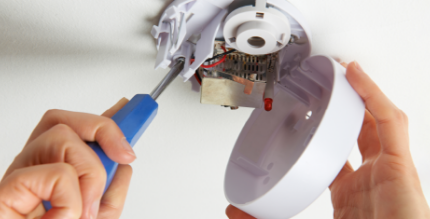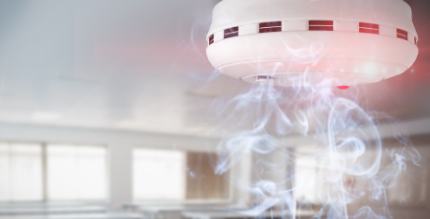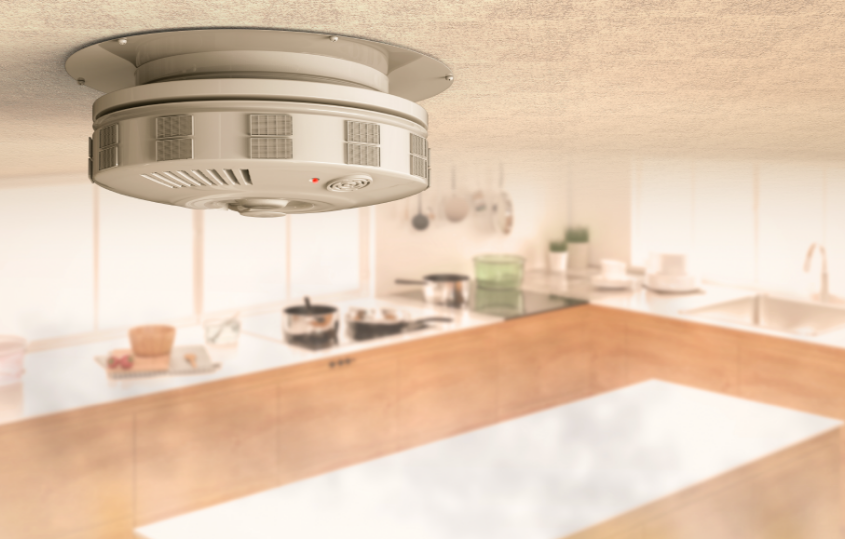Fire safety is a paramount concern for homeowners, and installing fire alarms is a critical component of any comprehensive safety plan. However, answering the question, “How many fire alarms do you need in your home?” can be a complex task. In this guide, we will delve into both local regulations and general guidelines, offering homeowners a comprehensive approach to safeguarding their homes from the devastating impact of fires.
Understanding Local Requirements
Local regulations play a pivotal role in establishing the minimum requirements for fire alarm installation in homes. House size, layout, and specific room functions often influence these requirements. Homeowners must familiarize themselves with local fire department regulations or building codes to ensure compliance with these standards. A quick call or visit to local authorities can provide invaluable insights tailored to your location.

General Guidelines for Homeowners
While local regulations should be the primary reference, there are general guidelines that homeowners can follow to ensure comprehensive smoke alarm coverage:
General
- Install smoke alarms or carbon monoxide alarms high on the walls or ceilings. If you choose to mount a smoke alarm on the wall, it should be installed roughly 12 inches from the ceiling or less. When there is smoke from a house fire, the smoke rises, so the higher the alarm is, the more likely the alarm will be set off.
Bedrooms and Hallways
- Alarms should be installed in every sleep area and bedroom to provide individualized protection.
- Place smoke alarms strategically in hallways outside bedrooms, ensuring coverage for primary escape routes.
Living Areas
- Common living areas such as the living room, family room, and dens should be equipped with hardwired smoke alarms to account for potential fire sources.
Kitchens
- Given the unique challenges of kitchens, a heat detector should be installed to avoid false alarms from cooking appliances.
- Additionally, place a smoke detector near, but not too close to, the kitchen to ensure comprehensive coverage.
Basements
- Install at least one smoke alarm in the basement, and consider additional alarms if the space includes separate living areas.
Stairways
- Ensure working smoke alarms are placed on every level, including both the top and bottom of stairways.
Garages
- Install a smoke alarm in an attached garage, recognizing it as an area susceptible to fires.
Attics and Crawl Spaces
- While not common living areas, consider installing alarms in these spaces if they are accessible.
Interconnected Alarms
- Opt for interconnected smoke alarms to ensure that if one detects smoke, all alarms in the house will sound simultaneously.
Maintenance and Testing
Merely installing fire alarms is not sufficient; regular maintenance and testing are essential to guarantee their effectiveness. Consider the following maintenance tips:
Monthly Testing
- Test each smoke alarm monthly by pressing the test button to verify alarm sound functionality.
- For battery-powered alarms, change them at least once a year or as recommended by the manufacturer.
Keep Them Clean
- Dust and debris can compromise the performance of smoke alarms. Regularly vacuum or clean them to maintain optimal sensitivity.
Replace Old Alarms
- Smoke alarms typically have a lifespan of 8-10 years. Even if they appear to be functioning correctly, replace them as needed to ensure reliability.
Interconnected Systems
- For interconnected systems, conduct regular tests to ensure all alarms respond simultaneously, fostering a cohesive and efficient safety network.

Educating Family Members
Effectively safeguarding your home requires not only the installation and maintenance of fire alarms but also educating family members on safety protocols:
Evacuation Plans
Establish and practice evacuation plans regularly, ensuring every family member is familiar with escape routes and meeting points.
Emergency Numbers
Ensure everyone in the household knows the emergency numbers and understands how to contact the local fire department.
Fire Safety Drills
Conduct fire safety drills regularly, especially if there are young children in the household. Familiarity with these procedures instills the importance of quick and safe evacuation.
Protect Your Home with Mesa Alarms
Protecting your home from the devastating effects of a fire requires a well-thought-out fire safety plan, with properly installed and maintained fire alarms at its core. While local requirements provide a baseline, these general guidelines offer homeowners a robust foundation to assess and enhance their fire safety measures. Remember, the key to effective fire safety is not just having the alarms but also being proactive in their maintenance and educating your family on how to respond in case of an emergency. By prioritizing safety, homeowners can create a secure environment for themselves and their loved ones.
If you’re a homeowner in the Houston area looking for expert guidance on fire safety and alarm systems and have questions similar to “How many fire alarms do I need?” don’t hesitate to reach out to us at Mesa Alarms. Our team is ready to assist you in ensuring your home is equipped with the best possible protection against fire hazards. Your safety is our priority, and together, we can create a customized plan that suits your specific needs and local requirements.



